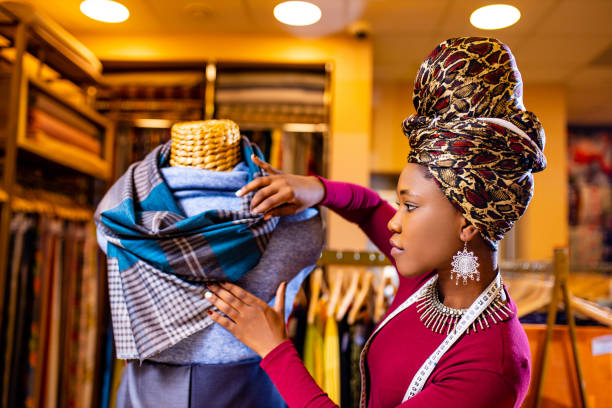In an era when fashion evolves at breakneck speed, new voices continually reshape aesthetics, ethics, and the very meaning of style. Below, we explore ten rising talents who are pushing boundaries, challenging conventions, and redefining what it means to be a designer in 2025. For those wanting to explore curated collections, you can browse impressive work via https://doors.nyc/collections/designers — a platform spotlighting independent and emerging names.
The landscape of fashion in 2025 is defined by sustainability, technology, cultural hybridity, and emotional resonance. The designers below exemplify that shift.
Emerging Voices Worth Tracking
Grace Ling (Singapore / New York)
Balancing craftsmanship and digital innovation, Grace Ling has built a distinctive voice by merging techniques like 3D printing, precision tailoring, and material experimentation. She dresses high-profile clients while maintaining a studio practice rooted in authenticity and restraint. Her ability to combine sculptural elements with wearable silhouettes makes her a designer to watch. thefashionography.com+1
Burç Akyol (France / Turkey)
Akyol’s work is sensual yet disciplined, often blending Eastern heritage with Western modernism. He is known for fluid drapery, sheer inserts, and subtle subversions of formal attire. His designs examine how identity, culture, and gender intersect in contemporary wardrobes. thefashionography.com
TORISHÉJU (Torishéju Dumi; UK / Nigeria / Brazil)
With a deeply narrative orientation, TORISHÉJU crafts collections that reference folklore, family stories, and myth. The brand also emphasizes ethical production — often employing deadstock materials and a made-to-order model — to reduce waste and celebrate intentional design. thefashionography.com+1
Ellen Hodakova Larsson (Sweden)
Winner of the 2024 LVMH Prize, Hodakova is celebrated for her inventive use of discarded or everyday materials, transforming belts, buckles, spoons, and vintage fabrics into bold couture statements. Her work defies waste, recoding the idea of luxury in ecological and poetic terms. Wikipedia+1
Ryota Murakami, a.k.a. Pillings (Japan)
His knitwear label “Pillings” plays with texture, distortion, and volume, often letting garments “grow” or mutate in surprising ways. The work is tactile and exploratory, pushing the boundaries of what knitwear can do beyond conventional structure. thefashionography.com
Nicklas Skovgaard (Denmark)
Self-taught and unafraid of experimentation, Skovgaard fuses performance, color, humor and craft. His presentations often lean into theatrical moments, involving models as co-creators. His work encourages a fresh dialogue between fashion and spectacle. thefashionography.com
Connor O’Grady (Australia / UK)
With a focus on sculptural womenswear and historic influence recalibrated for the present, O’Grady has gained attention for bold silhouettes and architectural forms. His work integrates craftsmanship with expressive forms. Wikipedia
Andrew Kwon (USA)
Andrew Kwon’s demi-couture bridal and eveningwear merges architectural precision and romantic sensibility. His collections often play in the tension between structure and softness, making him a rising name in occasion wear. Wikipedia
Abarna Kugathasan (Germany / Tamil heritage)
Exploring kitsch, cultural memory, and nostalgia, Kugathasan’s work channels Tamil aesthetic codes into playful, bold, lingerie-inflected couture. Her perspective is personal, rooted in diaspora identity and visual exuberance. Wikipedia
Tyler McGillivary (USA)
With roots in illustration, visual arts, and storytelling, McGillivary’s label leans on whimsy, surrealism, and bold prints. His 2025 New York Fashion Week debut “Date Night” collection celebrated expressive dressing, color, and theatrical spirit. Wikipedia
What Unifies These Designers
Each of these voices is distinct, yet several thematic threads tie them together:
Sustainability and Craft Integrity
Many are rethinking materials, supply chains, and waste. They treat upcycling, deadstock fabrics, and small-batch production not as constraints but as creative opportunities.
Narrative & Identity
Rather than chasing trend cycles, these designers ground work in stories — cultural lineage, personal history, myth, or memory. Their collections feel meaningful, not ephemeral.
Hybrid Methods
Digital tools, 3D printing, experimental construction, and hybrid techniques are now part of their vocabulary. The boundary between craft and tech is thinner in their practices.
Emotional Connection
These designers are not just making clothes — they’re making ideas you want to live inside. There is emotional depth, boldness, and expressive voice in their work.
Why Platforms Like the Doors.nyc Network Matter
To connect these rising designers with global audiences, platforms like https://doors.nyc/collections/designers play a vital role. Doors.nyc curates a selection of independent designers, gives visibility to new talent, and acts as a bridge between creators and consumers in an increasingly fragmented fashion ecosystem. Through initiatives like these, underrepresented voices gain access, and consumers gain access to fresh, original work.

